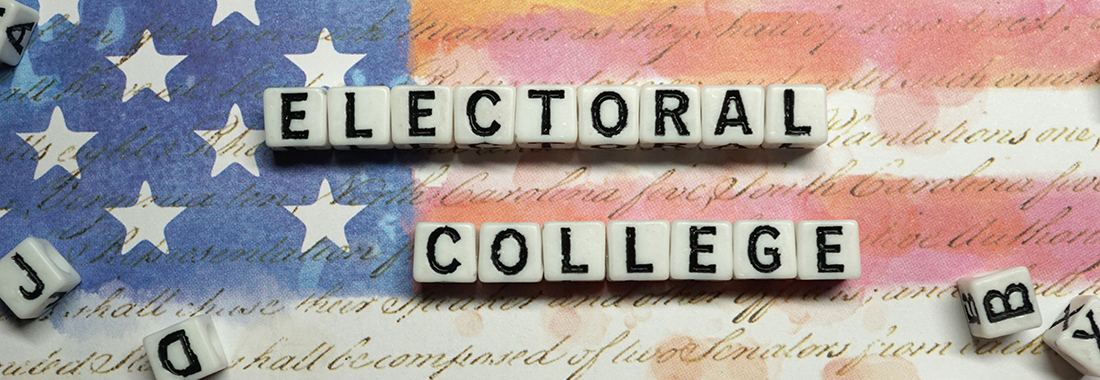Author: Dr. Emily Stacey, Rose State College
The Electoral College is a difficult concept in American politics that not enough grown folks know and comprehend.
The process of selecting electors varies by state and the obligation of the electors is different among the states. Overall, not enough Americans are aware of the Electoral College and how it functions.
As citizens of a democracy that utilizes the Electoral College process, and is responsible for the Popular Vote, it’s crucial we understand the difference between the two. We should also understand how our presidential elections are decided.
This conversation can be linked back to the importance of participating in the U.S. Census. It determines representation at a state level (redistricting), but also at the national level (in the U.S. Congress and the number of electors assigned to a state).
The following is a brief primer on the Electoral College and how it functions. This should provide students or even your colleagues with a better understanding of the functions of American democracy. Happy voting!
The Electoral College: What Is It?
The Electoral College is a process, not a place. The founding fathers established it in the Constitution as a compromise between election of the president by a vote in Congress, and election of the president by a popular vote of qualified citizens.
The Electoral College process consists of the selection of the electors, the meeting of the electors where they vote for president and vice president and the counting of the electoral votes by Congress.
Who Selects State Electors?
Choosing each state’s Electors is a two-part process:
First, the political parties in each state choose slates of potential Electors sometime before the general election. The first part of the process is controlled by the political parties in each state and varies from state to state.
Second, on Election Day, the voters in each state select their state’s Electors by casting their ballots for president. When the voters in each state cast votes for the presidential candidate of their choice, they’re voting to select their state’s Electors. The potential Electors’ names may or may not appear on the ballot below the name of the presidential candidates. This depends on election procedures and ballot formats in each state.
What Are the Qualifications of Electors?
The U.S. Constitution contains very few provisions relating to the qualifications of Electors.
Article II, section 1, clause 2, provides that “no Senator or Representative, or Person holding an Office of Trust or Profit under the United States, shall be appointed an Elector.”
As a historical matter, the 14th Amendment provides that “state officials who have engaged in insurrection or rebellion against the United States or given aid and comfort to its enemies are disqualified from serving as Electors.” This prohibition relates to the post-Civil War era.
What Are the Basic Components of the Electoral College?
The Electoral College consists of 538 electors. A majority of 270 electoral votes is required to elect the President. Your state’s entitled allotment of electors equals the number of members in its Congressional delegation: one for each member in the House of Representatives, plus two for your Senators. A couple items of note:
- Each candidate running for president in your state has his or her own group of electors. The electors are generally chosen by the candidate’s political party, but state laws vary on how the electors are selected and what they’re responsible for.
- Most states have a “winner-take-all” system that awards all electors to the winning presidential candidate. However, Maine and Nebraska each have a variation of “proportional representation.”
When and How do the Electors Meet to Certify the Vote?
The meeting of the electors takes place on the first Monday after the second Wednesday in December after the presidential election.
The electors meet in their respective states and cast their votes for president and vice president on separate ballots.
Your state’s electors’ votes are recorded on a “Certificate of Vote,” which is prepared at the meeting. Finally, your state’s Certificates of Votes are sent to the Congress and the National Archives as part of the official records of the presidential election.
Check out this helpful timeline of key dates for the 2020 election. It also includes information about the roles and responsibilities of state officials and the Congress in the Electoral College process.
For further insights and peer-tested tips on teaching an effective course, check out our full library of professional development resources.

